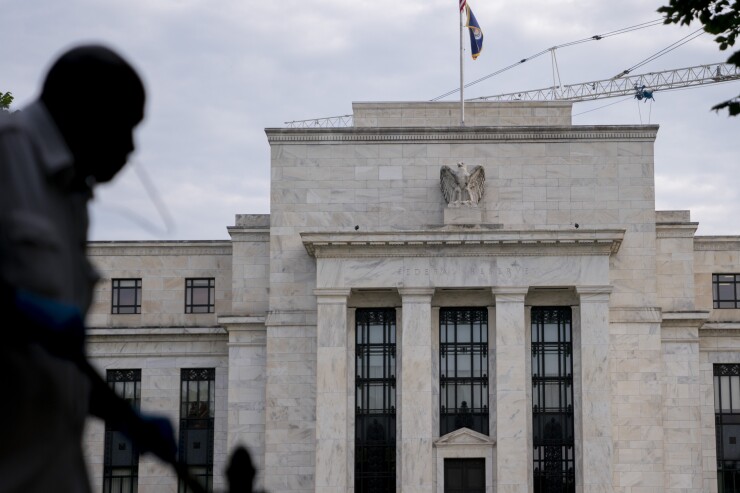
(Bloomberg) --Borrowing from a Federal Reserve emergency lending program likely jumped over the past week, just before the central bank raised the facility's interest rate to stop financial institutions from taking advantage and arbitraging on its attractive terms.
The latest figures in the Bank Term Funding Program, or BTFP, will be released at 4:30 pm Thursday in Washington as part of the Fed's weekly balance-sheet data. Borrowing has jumped by approximately $50 billion since mid-November after the program's rate increasingly fell below the rate at which institutions could earn money by parking reserves at the Fed.
The data will measure usage of the BTFP in the week ended Wednesday, cut just before the Fed announced that the cost to borrow via the tool will increase, effective immediately, to "be no lower" than that for reserve balances. Before the change, the BTFP borrowing rate was around 4.88% — some 52 basis points lower than the interest paid on reserve balances.
"Our assumption is that new borrowing will fall essentially to zero in the new statement week beginning today," Lou Crandall, chief economist at Wrightson ICAP LLC, wrote in a Thursday note.
Launched during the banking crisis last year, the BTFP allows banks and credit unions to borrow funds for up to one year, pledging US Treasuries and agency debt as collateral valued at par. The rate for this borrowing was tied to market swap rates, which have gone down in recent months as traders raised expectations of monetary easing from the Fed.
As part of the announcement Wednesday, the Fed also confirmed the BTFP will close as scheduled on March 11. Top central bank officials had increasingly signaled plans to shutter the program and cease making new loans.
In the week ended Jan. 17, bank borrowing from the BTFP surged the most since April and reached a fresh record high of $161.5 billion. That compared to only $2.3 billion in borrowing from the Fed's discount window, far below an all-time peak of $153 billion reached last March.
Even so, BTFP borrowing costs have given up some of their advantage recently as traders pared back bets on interest rate cuts.
Crandall at Wrightson ICAP said in his note he expects to see a $2 billion increase in BTFP usage, but didn't rule out that the Fed moved to raise the rate on Wednesday because it foresaw a sharp increase in its usage. The sudden jump in the BTFP rate has broader implications for the unwind of the Fed's balance sheet, he added. Institutions now have less motivation to refinance existing loans ahead of the program's March expiration.
"We'll revise our estimates after we see the maturity distribution of loans in this afternoon's" release, Crandall wrote. "But the change in lending terms clearly suggests that the runoff from the Fed's balance sheet will be faster than we had previously assumed."





